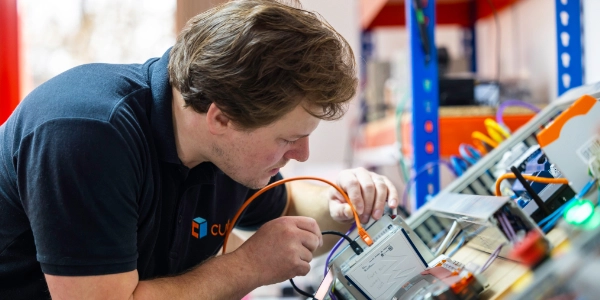2020 is always going to be defined as the year we were asked to stay at home. The majority of offices, shops and other commercial buildings were asked to close to prevent the spread of COVID. While you might think that this makes the work of your Building Management System (BMS) redundant, nothing could be further away from the truth.
Here we explore why an effective BMS has allowed many companies to be more flexible during these exceptional times.
Keeping the building working
When many of the commercial buildings closed over the lockdown, facilities managers were still required to physically visit the site. Important checks on the lighting, climate control and CCTV systems needed to be done on site, making sure they worked correctly. Waiting to inspect the heating until the workforce returned after the lockdown could have resulted in significant maintenance issues right at the time you were looking to get your business moving again.
However, we were able to provide customers with a BMS system which allowed building managers to monitor the systems remotely. On a simple level, for instance, they could check if someone had left a light on or the heating on and was wasting money. Not only that, but these checks could be done from the safety of home, so no one had to risk exposure to the virus to monitor the building. The environmental management and security of buildings via smart controls was a crucial tool for businesses.
Even smarter buildings
However, building management systems are expanding and evolving and can now support many applications that assist in the monitoring and management of the threats posed by aerosol viruses, such as coronavirus. It could be that your BMS is the route to shops and public buildings opening once more. Functionality that would have previously been used to manage security can now be applied to monitor social distancing and building occupancy levels.
You may think employing such technologies as thermal imaging cameras and occupancy monitoring systems is an expensive solution to a temporary problem. However, with the level of uncertainty wrought by the pandemic and the warnings from scientists that other pathogens may be on the way, such measures may be deemed necessary by governments sooner or later. It is possible these smart building applications will go from being nice to have for the employees, to being essential under legislation.
Innovation
As a consequence of this turbulent time, the BMS sector is rising to the challenge to innovate. The Internet of Things could see technologies deployed in buildings. While the pandemic is the driver, it is being facilitated by another theme of 2020: the rolling out of 5G connectivity. Connectivity allows for more complex solutions to be included in BMS solutions. The level of data throughput of new technologies requires the consistency and speed of newer technologies in this sector. No BMS will work efficiently in the future where there is a weak signal across the building. Secure, private cellular connectivity within a building will allow most businesses to go to the next level in BMS functionality.
Cube Controls is working at the leading edge of innovation of building management systems. Contact us today to learn how we can assist you in the transformation of your commercial space.




